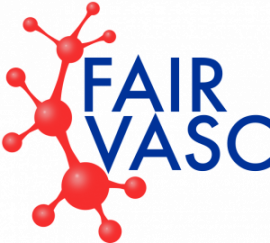
1. What is the role of your team in the Fairvasc project?
There are eight work programmes in FAIRVASC and I am responsible for Work Programme 1 (WP1). The main goals of WP1 are to describe the registries and the data contained within them. Practically speaking this has meant creating registry profiles by collecting ‘metadata’ and doing a data quality assessment of the registries’ data. Metadata is best described as ‘data about data’, as opposed to the underlying data itself. A couple of examples of metadata include the contact details of key registry personelle, the technology infrastructure on which the data is hosted or the data dictionary of a registry. I have led a data quality assessment process which has resulted in each registry doing an analysis of their own data quality, examining domains such as completeness (checking for missing data), uniqueness (checking for duplicates), consistency (does the data pass logical tests) and correctness (involving a check against a gold standard). Another big role, which has been a natural follow on from these WP1 tasks, has been to work on harmonising the data sets along with the WP3 team (led by Kris McGlinn, TCD) and the WP5 team (led by Karl Gisslander, Lund).
2. What tasks have been completed by your team so far and which of them have been the most challenging ones?
Our tasks are officially complete, but there can always be ways to extend registry profiles and the data quality assessment. Particularly with data quality, we are keen to establish a data quality improvement culture within FAIRVASC so that there is a long term plan to continually improve. This will mean that the data quality is of as high a standard as possible to enable complicated research questions to be addressed. The ultimate aim of this and the whole project is, of course, to help individuals with vasculitis. One of the most challenging tasks has been harmonising the datasets. It involves making a lot of judgments about whether data items have been similarly defined across the registries, which can be tricky to determine. We want to make sure we are not joining up registry data and inadvertently calling apples and oranges the same thing! Fortunately, we have very helpful members of the HIT team (Harmonisation Implementation Team) at each registry site who help us make these calls.
3. Each team is made up of people from different European centres. How is the work of such a group organised?
At the start of the project doing everything remotely seemed like a challenge, but I think it has actually turned out to be helpful. Pre-pandemic, the plan had been for me to physically visit the registries. While this would have been a great experience, having everyone be comfortable with remote working has meant that keeping in touch with team members in other countries on a regular basis has been easier than it might have been. Practically we use a lot of Zoom calls and a clever app called Basecamp, which is an all-singing-all-dancing project management tool that contains all of our communications and documents. More recently it has been both useful and really fun to meet some of my FAIRVASC colleagues in person for the first time at meetings ‘in real life’. There have been two: Florence, Italy where we made great progress on the project, and most recently Dublin, Ireland at the Vasculitis and ANCA Workshop 2022, where I think it’s safe to say FAIRVASC made quite a splash!
